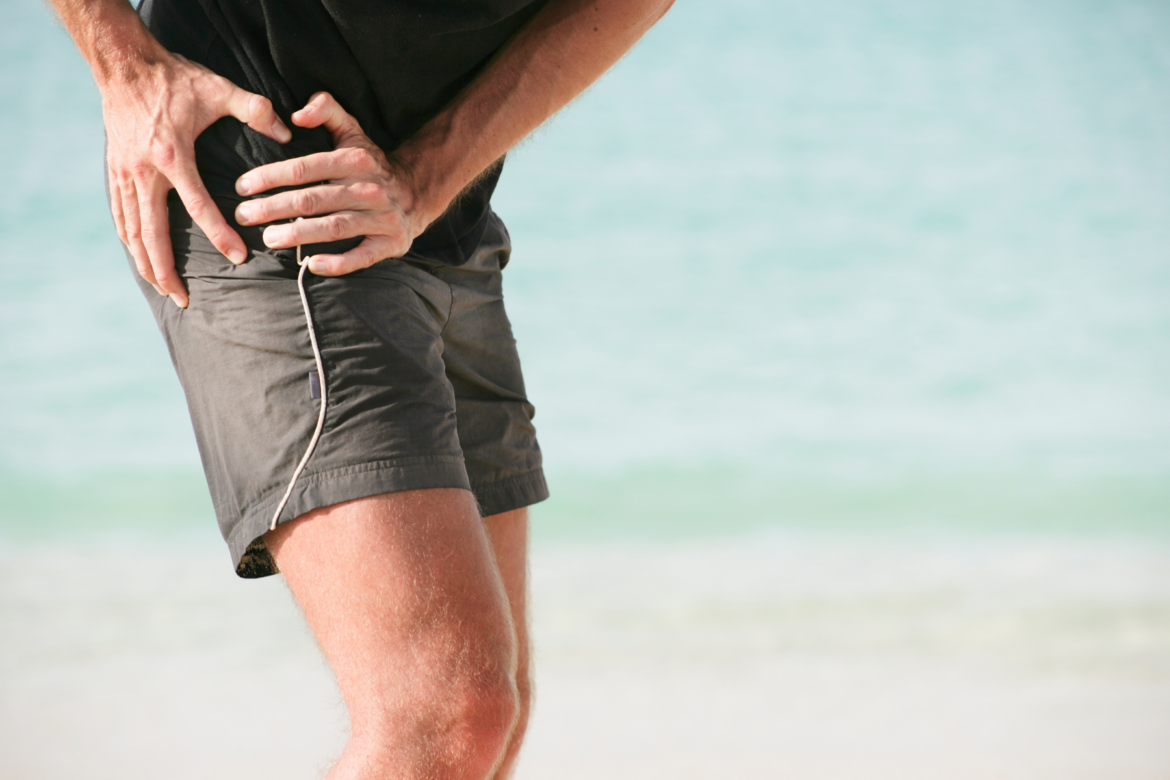It is almost summer here in Wisconsin! This means people are getting outside for activities like walking, running, biking, hiking, gardening, and swimming. Starting these activities again, you may notice an old injury that creeps to the surface or a new injury that arises. Since the weather has FINALLY turned in the right direction, I have seen an uptick in hip injuries.
In general, I have seen hip injuries that are a result of both flexibility deficits in the hip joint, as well as, strength deficits. Why is my hip hurting?
I am going to give a brief overview of flexibility and strengthening exercises to aid anyone who may feel like they are much like the patient described in this blog.
Where is the pain coming from?
From the patients I have seen here at Freedom Physical Therapy Services, patients typically have tight hip flexor muscles and strength impairments in their lateral hip musculature such as the gluteus medius and minimus, and glute extensors such as the gluteus maximus. I also see patients that have tight hamstrings but I believe this limitation in mobility is also due to a muscle strength deficiency rather than true muscle length impairments.
Flexibility first
To start with flexibility, I think it is important to perform a “true” hip flexor stretch in both a standing position and ½ kneeling position. I always like to take patients through both of these exercises and let them choose the one that works best for their bodies. Most people are stuck in an anterior pelvic tilt position which automatically will shorten the hip flexor based on the pelvic position so when I instruct this stretch I like to have patients first get into a posterior pelvic position by squeezing their buttocks together to get in this position and then lean forward as needed to achieve the stretch of this muscle group in the front of the thigh close to the waistline. Both sides should be stretched 2-3 rounds of 30-45 seconds to achieve adequate effects.
Strength training
With strength, there are various ways to strengthen both the hip abductors and hip extensors. Through both clinical trials and research, I have found a few exercises that I like to start patients with and can progress accordingly. First is a side-lying leg raise, then a side plank, then a single leg squat. All three have shown through research and EMG activity to activate the hip abductors. To perform the side-lying leg raise, I like to have a patient place their top leg closest to the ceiling into a slight extension to take the leg out of hip flexion to bias the abductors even more for sets of 12-15 reps.
The plank can be performed either with knees bent or knees straight based on strength levels and can be performed for 30-45 seconds. The single leg squat can be performed on a chair or treatment table and can be again performed for 12-15 reps as the patient is capable. For these strengthening exercises, we perform both legs to maintain symmetry with both legs.
What about the back?
For hip extension, I implement a hip hinge dominant movement in the form of a modified deadlift or glute bridge variation. There are a plethora of hip-dominated extension bias movement patterns to choose from and can be progressed or regressed based on patient tolerance and current physical activity levels to benefit all people. Repetition ranges should be 2-3 sets of 8-12 repetitions to focus on strength improvements.
In general, for the individuals whom I see in the clinic here at Freedom Physical Therapy Services, many of the patients I see are very strong in their hip flexor region and demonstrate increased tightness in this region. I believe many of these presentations are due to us, as humans, walking forward every single day to get where we need to go, which develops strength in this region. To improve this tightness that is present, I like to implement a hip flexor stretch either in standing or ½ kneeling to improve this tightness.
This position starts as a modified lunge position where the leg placed in the backward position to start is the leg we are focusing on for the stretch. An individual will then squeeze their buttocks together to place the pelvis in a posteriorly tilted position to enhance the stretch and then lean forward from the hips as needed to increase the stretch. This should be performed in 2-3 rounds of 30-45 seconds.
Why it’s so important
Having both a mobile and strong hip structure can limit pain in our hip region and lead to living a stronger and healthier lifestyle. Try adding both the strength routine and mobility routine to what you have already to get an extra benefit with the summer coming up!
Please contact anyone at Freedom for any questions or further instructions regarding how to improve hip pain.


As summer activities pick up in Wisconsin, hip injuries have become more common. These injuries often result from a combination of hip joint flexibility and strength issues. Many patients at Freedom Physical Therapy Services experience tight hip flexor muscles and weaknesses in lateral hip muscles like the gluteus medius and minimus, as well as glute extensors such as the gluteus maximus. Addressing these issues involves flexibility exercises like hip flexor stretches and strength training exercises like side-lying leg raises, side planks, and single-leg squats. These exercises aim to improve hip abduction and extension strength, alleviating hip pain and enhancing mobility.